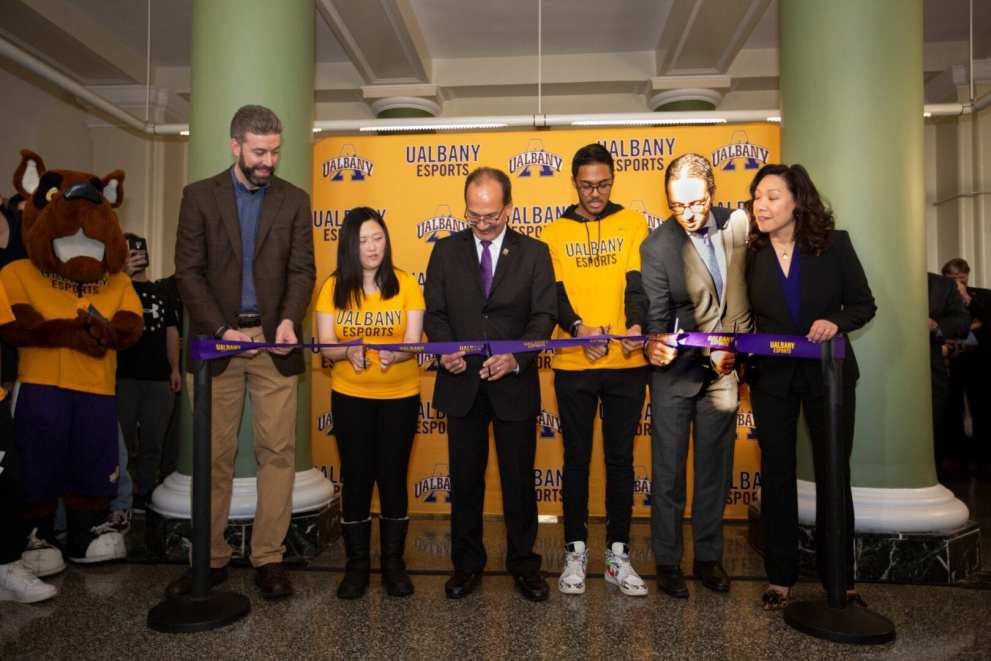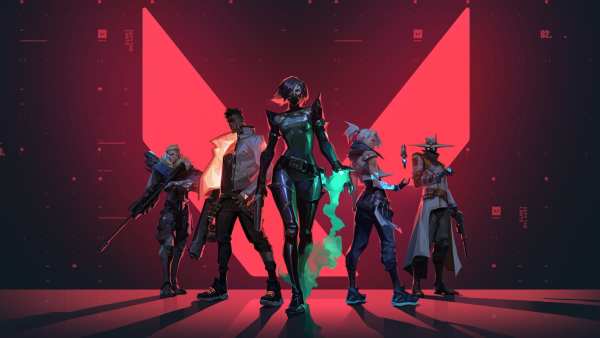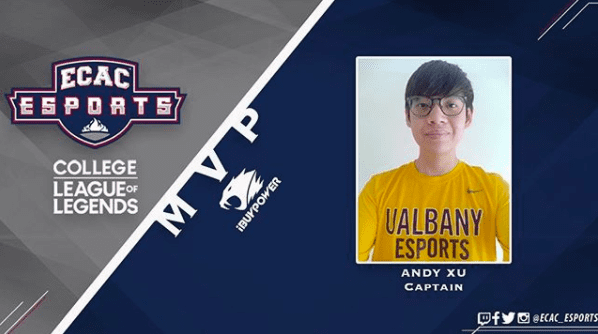The recent appearance of competitive video game competitions on U.S television networks such as TBS and ESPN might lead one to believe that esports is only now rising to prominence, but the truth is that this hugely popular segment of the gaming industry has been consistently building for years.
Arcade classics from the 70s and 80s such as Donkey Kong laid the foundation, while the popularity of highly competitive PC games like Counter-Strike and StarCraft: Brood War in the late 90s and early 2000s formed the genesis of what esports would eventually look like today.
Esports is no longer a quirky novelty. It has grown into a massive industry that, by many relevant measures, is getting bigger each year and is continuing to trend in that direction.

According to PwC, global esports revenue jumped from $194 million in 2014 to $980 million in 2019 and they anticipate it will continue to grow and hit $1.8 billion by 2023 with media rights, sponsorships, and advertising from interested third-parties looking for an in into the industry-leading a significant portion of the growth.
Forward-thinking college universities such as the University at Albany (also known as UAlbany), located in upstate New York, have begun to embrace esports and take it as seriously as they would any athletic or academic endeavor.
UAlbany eSports has only been in existence since the 2019 spring semester, but within that short amount of time, UAlbany has formed a team that competes in eight different games, joined a conference, and has even won championships.
Twinfinite recently spoke with Michael Leczinsky, professor at the College of Emergency Preparedness, Homeland Security, and Cybersecurity at UAlbany, and leader of the UAlbany eSports program.

Starting an officially recognized esports team, securing funding to create a proper stadium and practice area, joining a conference, and then instantly competing and winning would appear to be a tall task for any school, yet that’s exactly UAlbany has achieved.
I wanted to speak with Leczinsky to get a feel for what the blueprint for success in breaking into the collegiate esports field from square one looks like.
It starts, of course, with having an enthused student population that loves video games and is eager to take it seriously and compete.
Having a Gaming Ecosystem
Despite only having started in an official capacity recently, UAlbany had a massive advantage that not many other schools can replicate: a large and diverse student body of more than 17,500 that not only hail from within New York State but also all over the country and the globe.

Another factor that helped the program quickly get off the ground was that prior to UAlbany eSports formation, there had already existed an esports club, a Smash Bros. club, and a tabletop board game club known as The Guild.
According to Leczinsky, the school had a strong relationship with the clubs on campus and worked together to increase the opportunities for gamers on campus. “A rising tide raises all ships” he said.
When it came time to get organized, there was a great deal of excitement on campus.
“When we initially presented the proposal for this we anticipated approximately 30 to 60 students being involved. In the first two weeks of the announcement we had 175 students fill out the application. We’re currently at about 370 or so [applications]. The interest was tremendous. Our team is now over 100 students and we’re excited about the potential for future growth.”
The ECAC competes across eight games: Overwatch, League of Legends, Fortnite, Rocket League, Madden, FIFA, Super Smash Bros. Ultimate, and Hearthstone. UAlbany was able to field a team for each, which is not typical of most of the teams that compete in the ECAC.
The gaming ecosystem and enthusiasm for esports at UAlbany is very strong, and Leczinsky made it a point to note that on every point along the way of this journey, students were involved.
Student captains have assisted Leczinsky with scheduling games, developing practices, casting, event production, and helping to broadcast games to student dining halls and pubs.
Students even played a critical role in the construction of UAlbany eSport’s arena.
“When we built our arena, we had our student workers, captains, and our student volunteers unboxing the machines, setting them on the table, getting them logged on, downloading Overwatch, helping to program all the backlight features.
There are so many opportunities for students to help out and be a part of the journey whether that is as a paid job, a captain, a volunteer, an intern, through hands-on learning. My goal was to capture the enthusiasm and interest, and be a multiplier.”
Clearly, there was no shortage of students at UAlbany interested in pursuing a career in esports, but in order for the program to grow and thrive, it also needed the buy-in from the university’s administration.
Partnership Between Leadership and Students
Creating an esports program capable of developing into a fixture of a university similar to traditional athletic sports needs the support of a university willing to help the program to put down roots.
Fortunately for the enthusiastic UAlbany eSports team, there were few roadblocks to contend with at UAlbany.
On the contrary, the institution’s leadership, including UAlbany President Havidán Rodríguez and Vice President for Student Affairs Michael Christakis, were not only supportive of the idea of an organized esports team but also provided the funding and support needed to get the program up and running.

The esports team was able to secure not only two paid undergraduate student positions but also an arena space filled with gaming PCs.
“UAlbany eSports is has been a team effort from the beginning. Supported by the Office of the President, Student Affairs, the College of Emergency Preparedness, Homeland Security and Cybersecurity and units across campus, this initiative would not be as successful as it is without the contributions of so many talented individuals.” Leczinsky said in praise of the support the program received from around the university.
In the months that followed, video games have also become more integrated into the university’s curriculum as well.
Leczinsky now teaches a class dedicated to esports and the digital gaming space aimed at students looking to carve out a career somewhere within video games and the digital space.
“In addition to the new class, INF 171: eSports and Digital Gaming Ecosystem, there is an internship in eSports where students receive hands on experience helping to run our arena and our team. There are also other classes and opportunities that have been proposed and that we are very excited about.”
In addition, a game design and development program is in the works, one that is being created to offer students at UAlbany to broaden their ongoing education of the video game industry behind esports is also in the works.
The commitment to action is certainly impressive. Indeed, although video gaming’s rise to prominence as one of entertainment’s most prosperous mediums has long been apparent to those with whom it concerns, educative institutions such as UAlbany deserve credit for seeing past the stigmas that are often attached to gaming as a hobby and offering its students an opportunity to pursue a career in this lucrative new field.
But what of the competitive spirit that ultimately drives all young sportsmen and women? After all, while a developed esports program has tangible benefits to a school outside of the esports arena, ultimately everyone involved would obviously like to win.

Putting together a competitive squad in any one particular game from a pool of players from the same school is challenging enough. Now multiply that by every game you want to field a team for, and then find a way to properly coach and train all of these players: a daunting task, indeed.
While Leczinsky is an experienced gamer himself, he focuses on providing macro-level guidance to his players across all games.
“A coach is expected to set the tone for the team, encourage professionalism and support students not only in games, but also academically and through mentorship.”
He works alongside each game’s top players to develop training to help bring up the rest of the team.
Overcoming the Inevitable Challenges
Creating the UAlbany eSports team and developing it to a point where it can compete across every ECAC supported game was a mountain that the school needed to climb.
Unfortunately, it wouldn’t be all smooth sailing as the outbreak and spread of COVID-19 threatened the health and safety of the entire UAlbany community, just as it did every community around the world.

Like many college campuses, UAlbany shut classes down shortly after the outbreak started taking hold in the U.S..
They’ve since gone remote, and the UAlbany community switched gears and focused their efforts on figuring out ways that they can best support the student body, staff, and faculties in general. Several ECAC events were canceled, and, for a time, UAlbany eSports was stopped in its tracks just like every other sports body across the country.
Unlike traditional sports, however, esports benefit from their ability to run in a remote capacity. While still keeping the health and safety of the team at the forefront, operations were able to resume once everyone was settled back home on their own personal computers.
Leczinsky runs the team over Discord, a program that allows them to communicate and coordinate practices across all games. As many people reading this could likely imagine, the UAlbany eSports team is compromised of very technically-gifted students and many of them were able to easily set up their own PCs and get back to work.

The show had to go on and online events eventually did resume. The unfortunate void of traditional sports during the global COVID-19 pandemic created a space for the hard-working student esports competitors to stand out even more and also presented them with an opportunity to aid their fellow students.
Across a few weeks spanning April and May of 2020, SUNY (State University of New York system of public colleges) sponsored the SUNY Chancellor Esports Challenge with $20,000 worth of prize money directed towards the school’s Student Emergency Funds.
This tournament featured 64 colleges competing across three games: Fortnite, Super Smash Bros. Ultimate, & Rocket League, all of which were right in the wheelhouse of UAlbany eSports.
While other sports await the all-clear to safely resume activity, UAlbany eSports was able to play in weekly matches, featuring players from across the country and spectated by audiences even further afield. In a world that currently feels upside down, having the opportunity to showcase all the emotion and excitement that comes with sports competition is a welcome reminder of happier times.
And more importantly, it was an uplifting event that supported an excellent cause: gifting money that would go towards food pantries, emergency resources, computers, and more.
Winning and Growing
In spite of being a relatively new team spread out across eight different games, and playing remotely with missing players, UAlbany eSports has found a winning formula.
That includes, of course, the aforementioned SUNY Chancellor Esports Challenge. UAlbany was able to secure $5,000 in prize money by finishing in first place for Fortnite and third place for Rocket League.
As esports continues to grow in popularity and new video game IPs burst onto the scene looking to be the next big thing, UAlbany eSports has kept its finger on the pulse. Not long after the beta was released for Valorant, the team was able to quickly put together a squad of roughly ten players.
ECAC will be offering Valorant in the fall and UAlbany eSports will be ready for it.

ECAC, Riot Games, and other major players in the collegiate esports scene recognize the industry’s massive potential and take it quite seriously. Leczinsky believes that will only intensify over time.
The NCAA currently does not govern esports and in May 2019 there was a unanimous vote to table the idea of getting involved.

While the NCAA continues to mull esports over, universities around the country carried on in a variety of different ways.
Some already have esports under Athletics, with computers located somewhere in the gymnasium areas. Others still approach esports informally with players coming and going into student-run clubs.
Leczinsky is excited about the future growth of esports:
“As eSports continues to grow on an unprecedented international level, I’m excited for the continued emphasis on professionalism, dedication to excellence in the field. Students on our co-ed team represent all class years, majors and reflect our overall student body well. It has been extremely rewarding to be a part of such an exciting new initiative at the University at Albany and I can’t wait to see what’s next!”
